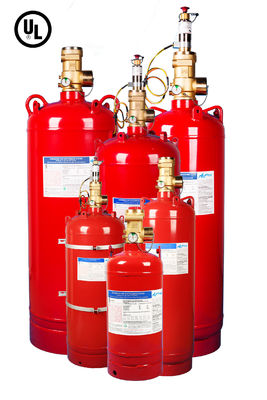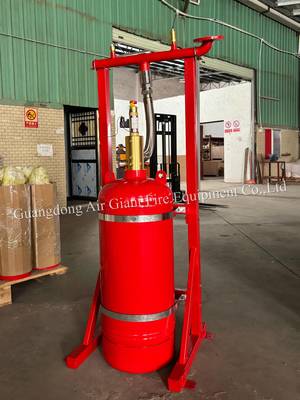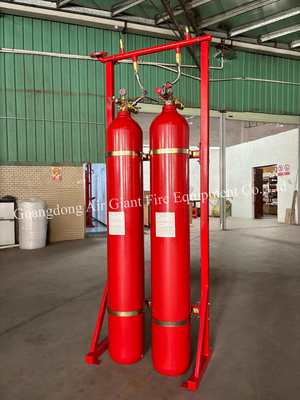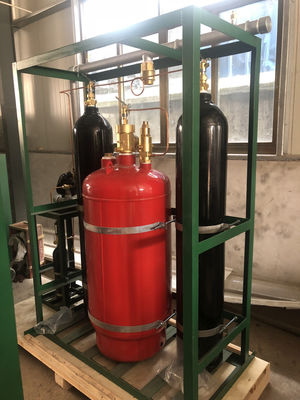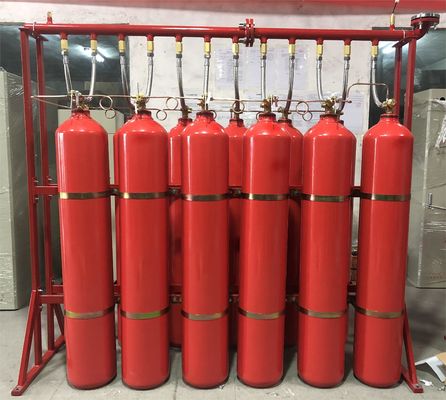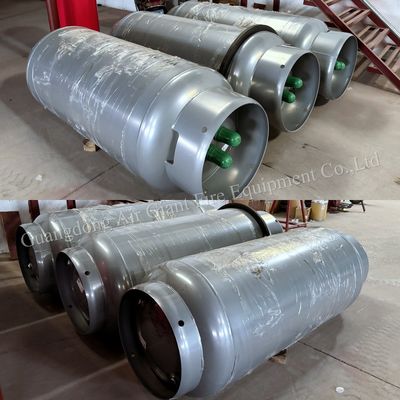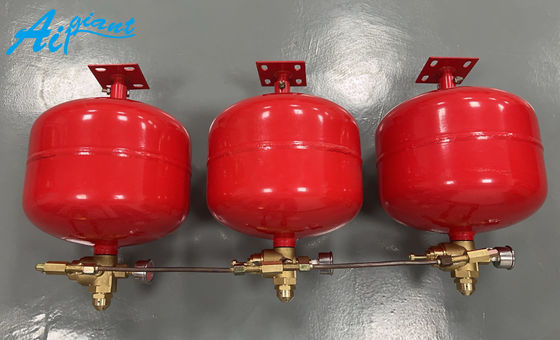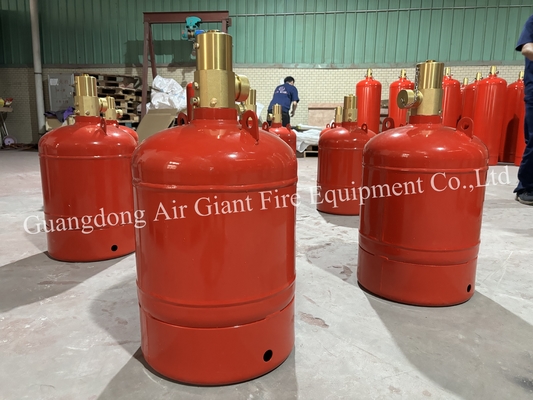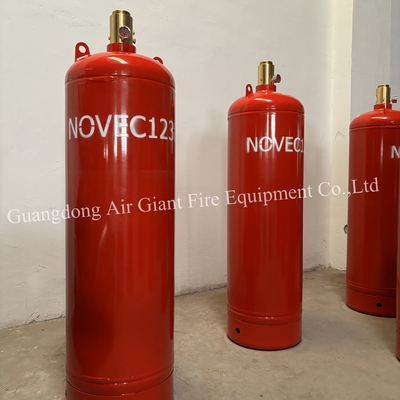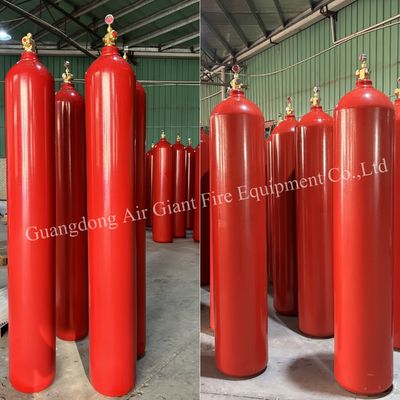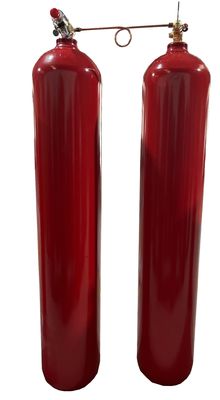Double Cylinder Kitchen Fire-fighting Suppression System
*** Description of Kitchen Fire Suprresion System
Activation Method:
1. Automatic Activation Method:
1.1 Thermal Detection: When a fire occurs in the kitchen oil pot, the heat generated by the flames will cause the temperature inside the hood to rise. When the temperature reaches the preset thermal threshold of the fire suppression system (usually 183°C to 185°C), the thermal detector will automatically disconnect, triggering the fire suppression system to activate automatically.
1.2 Release of Fire Extinguishing Agent: Once the fire suppression system is activated, it will release fire extinguishing agents (such as dry powder, water-based agents, etc.) through atomizing nozzles, spraying them onto the oil pot and inside the hood. These agents will either chemically react with the burning oil or physically isolate it, forming a covering layer to cut off the air supply and extinguish the flames.
1.3 Cooling Down: After the fire suppression system sprays the extinguishing agent, it typically activates a water flow valve automatically, spraying water onto the oil pot and exhaust hood to cool them down and prevent re-ignition. The cooling water is sprayed for about two minutes before the system automatically shuts off the water.
2. Manual Activation Method
2.1 Fire Detection: In the early stages of a fire or if the automatic activation system fails, on-site personnel can manually activate the fire suppression system.
2.2 Operating the Manual Activation Device: Follow the instructions on the device to remove the safety pin, pull out the ring, or press the button, causing the drive valve to activate and release the fire extinguishing agent from the high-pressure cylinder.
2.3 Observing the Extinguishing Effect: After manually activating the fire suppression system, observe whether the fire source is completely extinguished and take necessary follow-up measures.
3. Mechanical Emergency Activation Method
3.1 Confirming Automatic and Manual Activation Failure: When both automatic and manual activation methods fail to start the device normally, the mechanical emergency activation method can be used.
3.2 Operating the Mechanical Drive Valve: Manually operate the drive valve handle to open the mechanical drive valve, releasing the fire extinguishing agent to extinguish the fire.
*** Components of Kitchen Fire Suprresion System
The main components of a kitchen fire suppression system include:
✅ Detection components (thermal sensors)
✅ Fire suppressant storage and release components (storage tank, valves, propellant gas)
✅ Discharge system (piping, nozzles)
✅ Interconnected control components (gas shut-off, alarm, power cutoff)
✅ Auxiliary accessories (pressure gauge, filter, mounting brackets)
*** Working principle of kitchen Fire Suprresion System
** Flame Detection and Activation
1. Thermal Fusible Metal Cable Release Device: When the oil pot on the kitchen stove catches fire, the intense heat from the flames will cause the thermal fusible metal cable release device to heat up and detach.
2. Thermal Detection System: Simultaneously, the thermal detection system will detect the flames or high temperature, triggering the release mechanism of the kitchen fire suppression system. During this step, the system pressurizes the fire extinguishing agent storage container and activates all auxiliary electric shut-off devices (such as gas shut-off valves) and alarm linkage devices.
** Fire Extinguishing Agent Release
1. Fire Extinguishing Agent Spray: Once the release mechanism is activated, liquid fire extinguishing agents (such as foam, dry powder, or other specialized agents) are sprayed through nozzles onto the surfaces of kitchen stove equipment, as well as inside the exhaust hood, grease filter, and exhaust ducts. These specialized agents can quickly extinguish flames in the oil pot and form a covering layer to suppress the combustion of oil vapors, thereby preventing re-ignition.
2. Type of Fire Extinguishing Agent: Some kitchen fire suppression systems use high-pressure gas to propel the fire extinguishing agent. In this case, a mechanical actuator pierces the high-pressure gas cylinder, releasing high-pressure gas into a pressure-reducing valve. The gas then enters the top of the fire extinguishing agent cylinder, pushing the agent through delivery pipes to the nozzles for spraying.
** Cooling and Flushing
1. Water Spray Valve Activation: After the system's extinguishing agent is sprayed, the water spray valve on the system will automatically open after approximately 3 to 8 seconds.
2. Water Flow Flushing: Water flows through the fire extinguishing agent pipes and nozzles, rapidly cooling and flushing the oil and stove equipment surfaces, ensuring the fire source is completely extinguished and preventing re-ignition.
** System Reset and Inspection
1. Manual Reset: Some kitchen fire suppression systems require manual reset after extinguishing a fire, such as manually resetting the gas emergency shut-off valve to reopen.
2. System Inspection: After each use or periodically, conduct system inspections to ensure the device is in good working condition, the fire extinguishing agent is sufficient, and all components are tightly connected without leaks.

*** Advantage of Kitchen Fire Suprresion System
-- Rapid Response
-- Automated Operation
-- Effective Cooling and Re-ignition Prevention
-- Environmentally Friendly and Safe
-- Wide Applicability
-- Self-Diagnostic Function
*** Application of Kitchen Fire Suprresion System
1. Commercial Catering Establishments: Restaurants and Canteens, Hotels and Guesthouses
2. Public Institutions and Enterprises: Schools and Hospitals, Government and Enterprise Units Food
3. Special Locations: High-Rise Buildings, Special Industries
4. Other Regulated Locations: High-Risk Fire Units, Large commercial complex

*** Packages of Kitchen Fire Suprresion System
We pack products with first polyfoam and then the wooden cases. Once products are too big or customers require a pallet for products, we will make products a pallet. The following pictures are the common packing of products:


 Il tuo messaggio deve contenere da 20 a 3000 caratteri!
Il tuo messaggio deve contenere da 20 a 3000 caratteri! Si prega di controllare la tua email!
Si prega di controllare la tua email!  Il tuo messaggio deve contenere da 20 a 3000 caratteri!
Il tuo messaggio deve contenere da 20 a 3000 caratteri! Si prega di controllare la tua email!
Si prega di controllare la tua email! 
